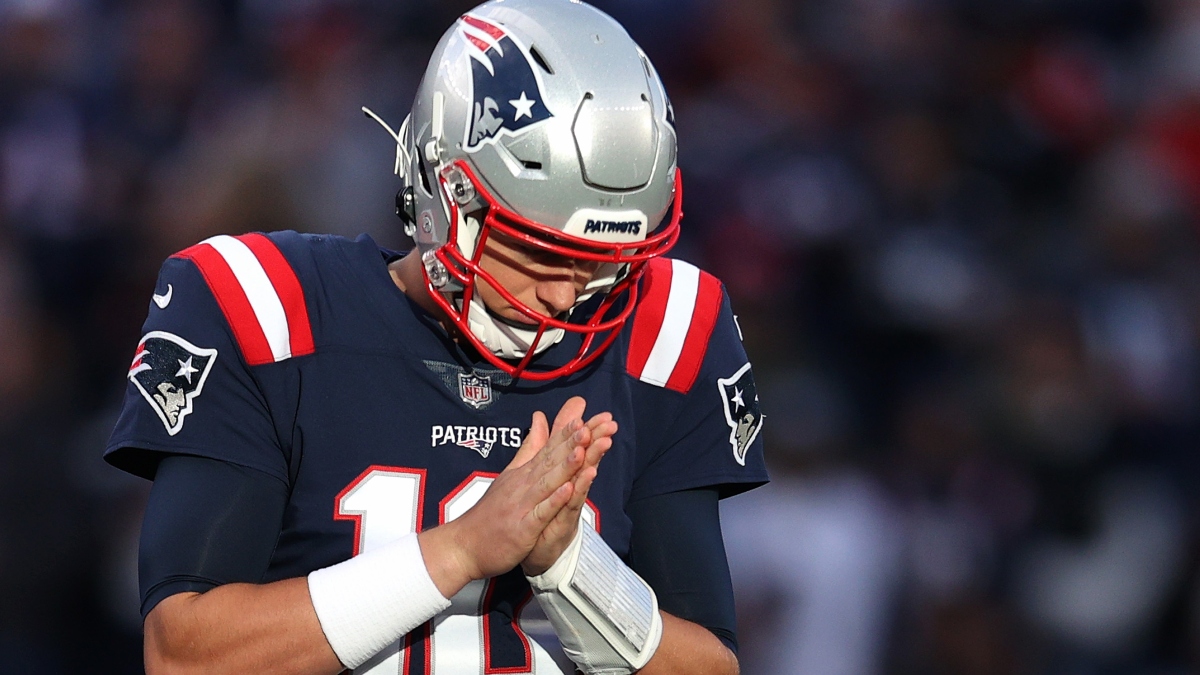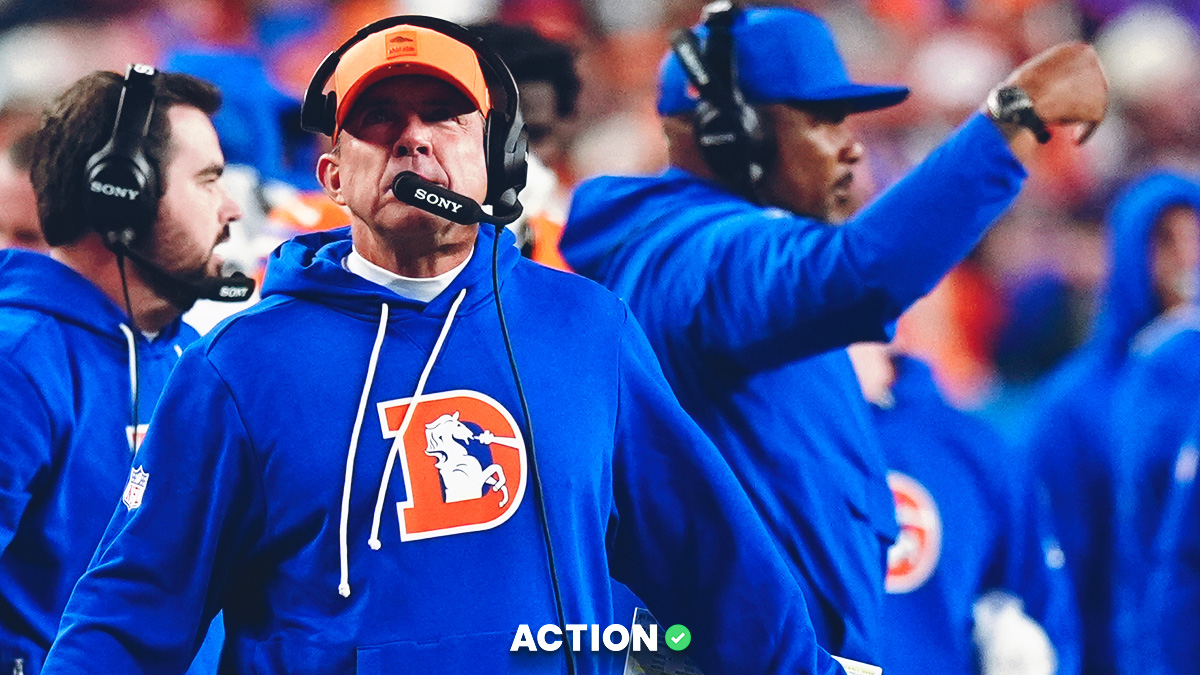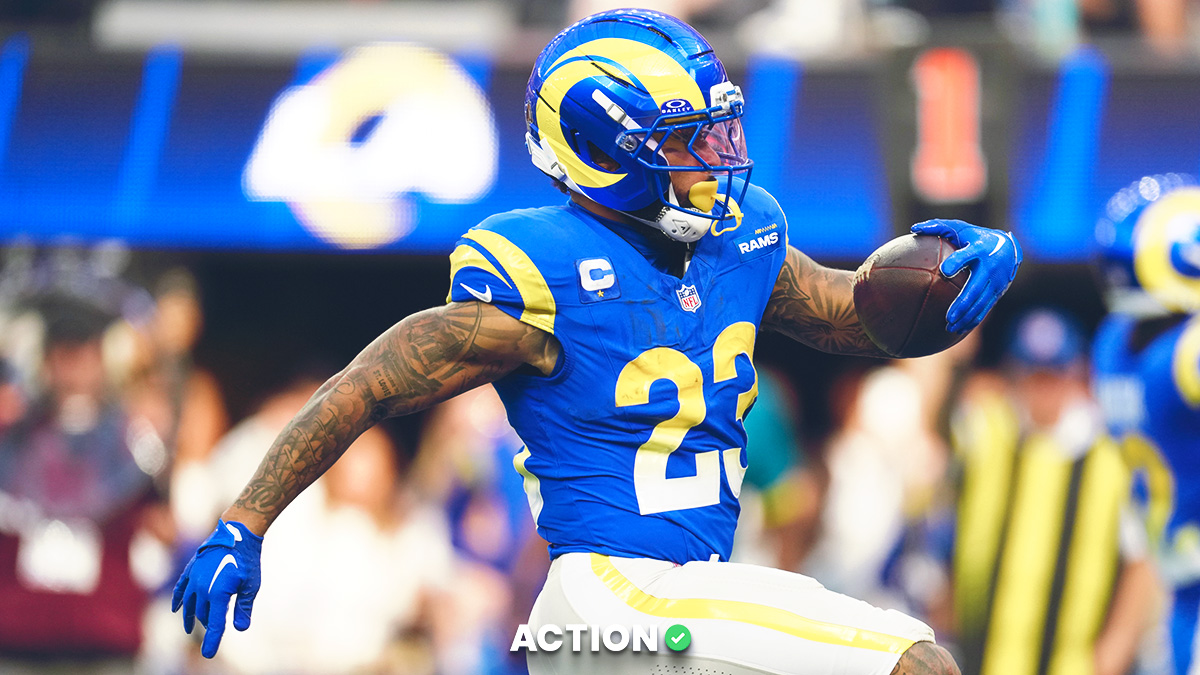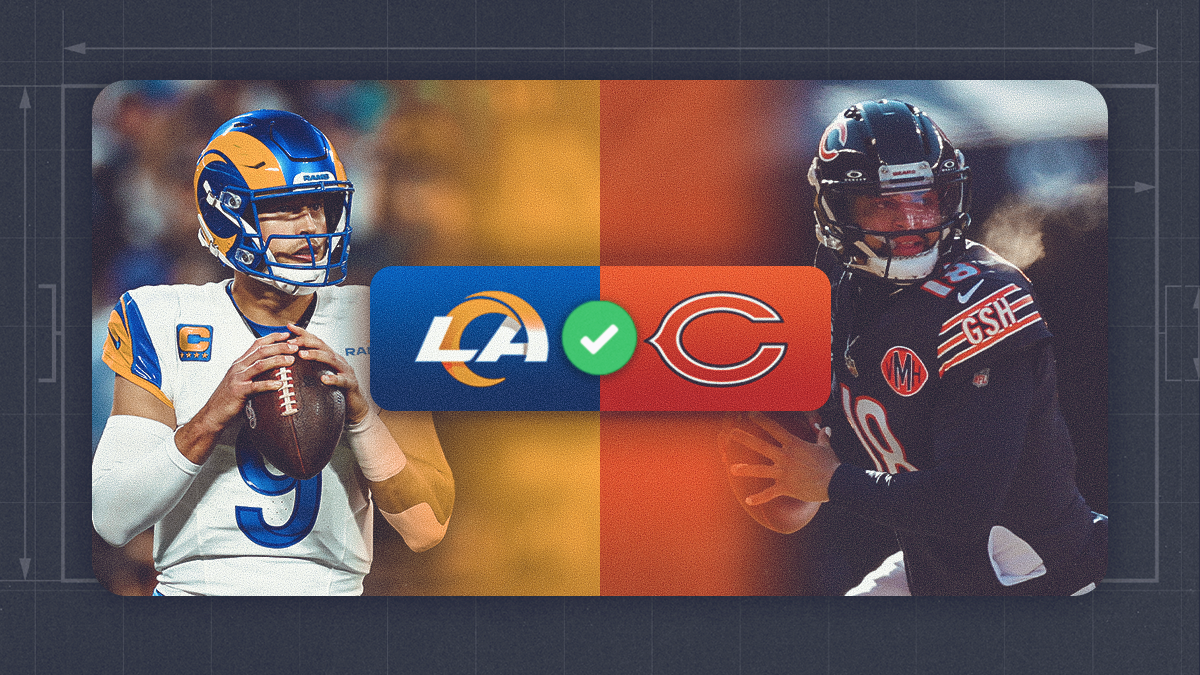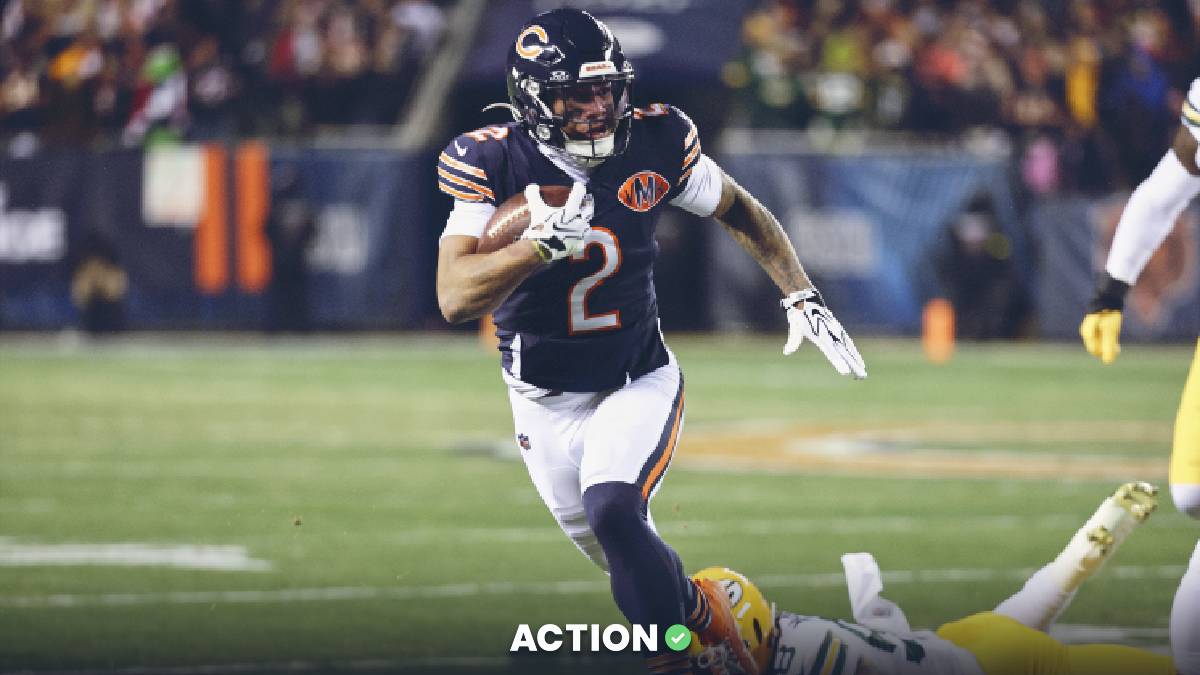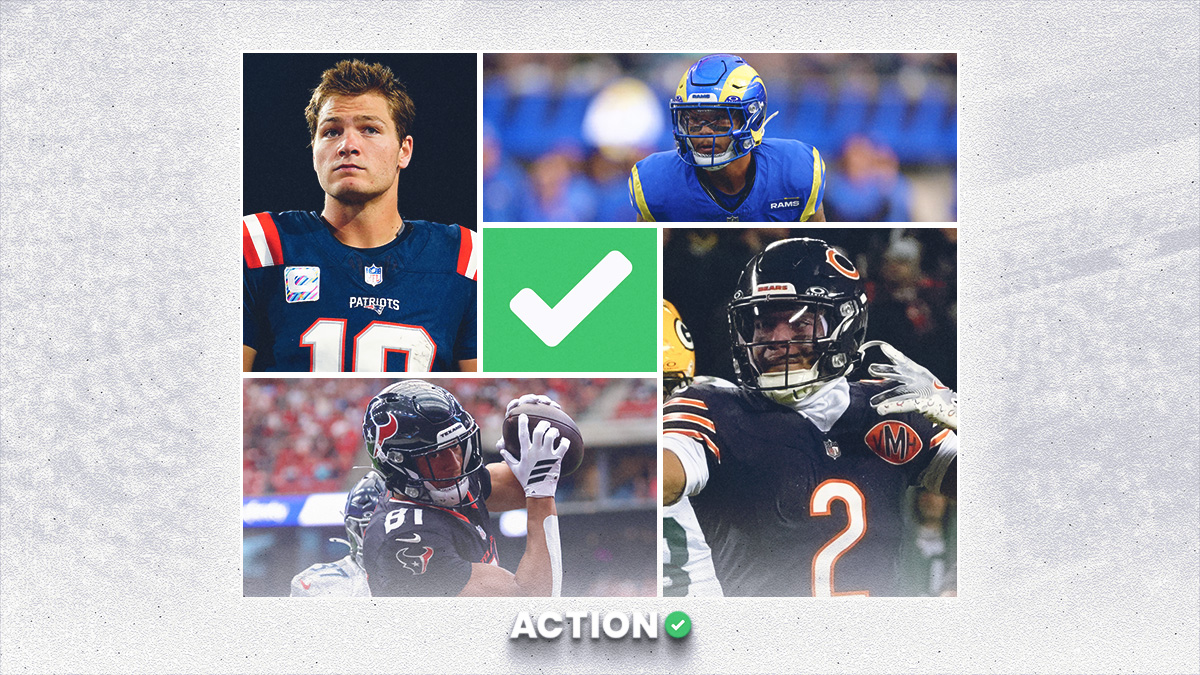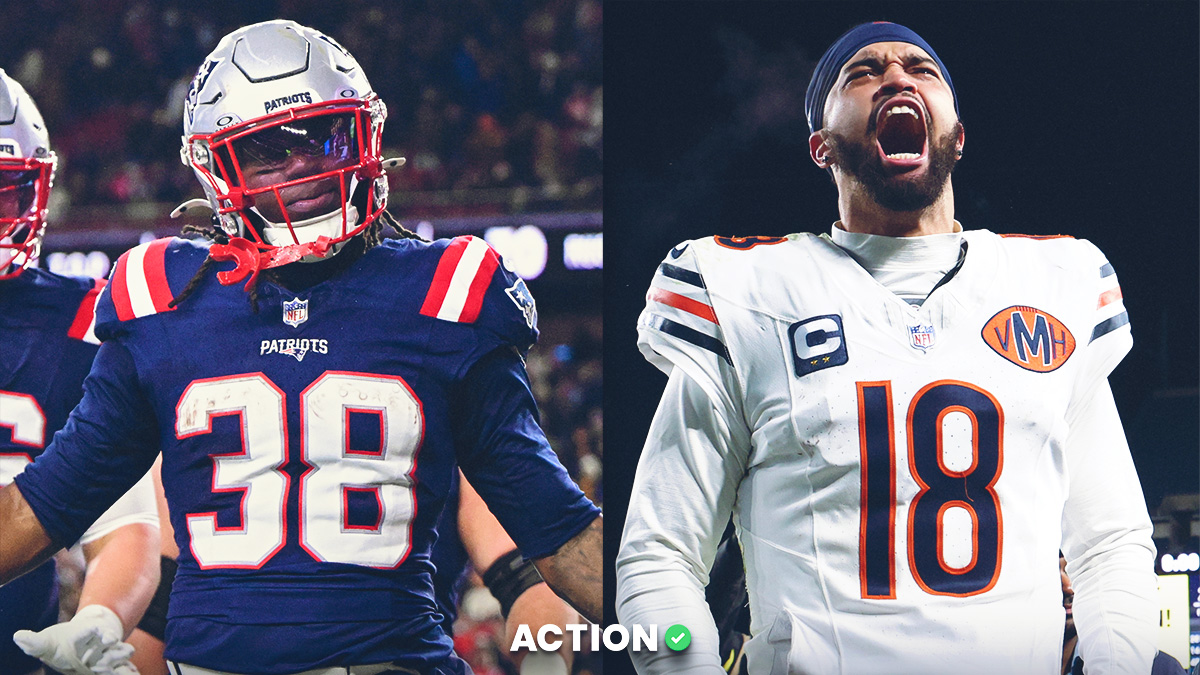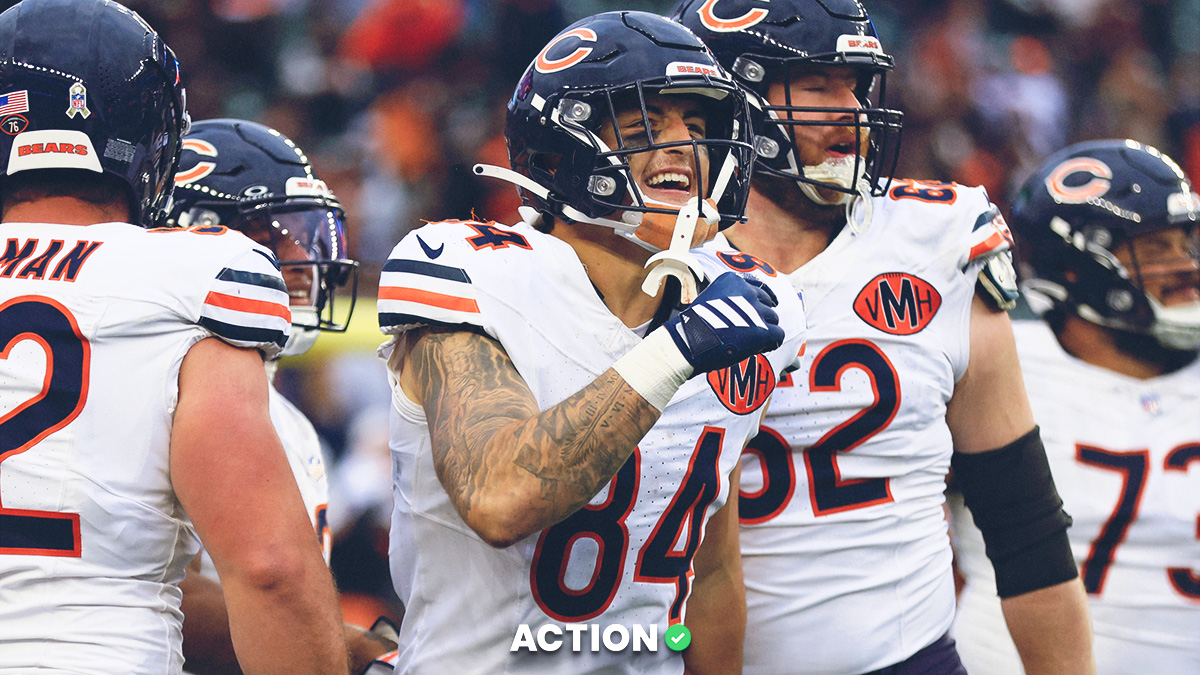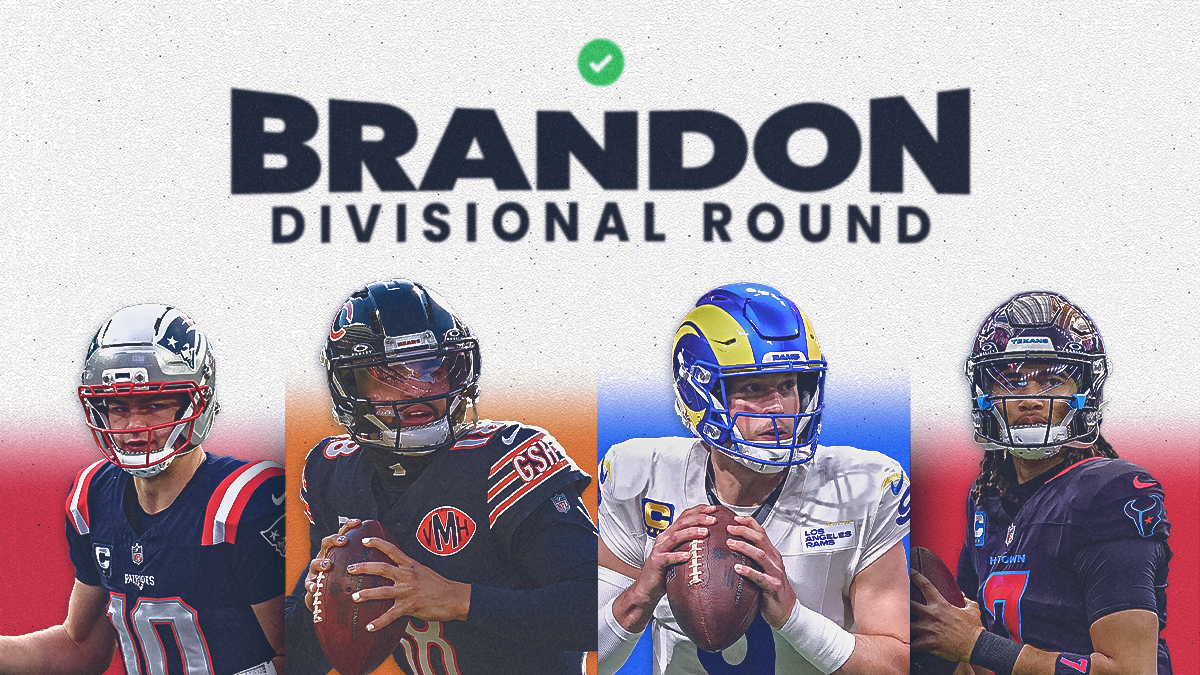After a six-game winning streak that continued with a beatdown of the AFC-leading Tennessee Titans, the New England Patriots look like one of the best teams in the NFL. The defense and special teams, unsurprisingly, have been elite.
The bigger surprise is that rookie quarterback Mac Jones and the offense have been efficient and opportunistic. As a result, the Patriots are one of the most efficient teams in the league on a per-play basis.
Still, one thing is holding fans and pundits back from calling the Patriots a true Super Bowl contender.
Do the Patriots generate enough explosive plays in the passing game?
Sure, Jones has been great, but is an offense that can't generate explosive plays doomed to fail in the modern NFL, even if it's been efficient in previous games?
Let's take a deep dive into NFL play-by-play data to find out. If you want to skip to the results, click here.
What is an Explosive Play?
We first need to define an explosive play.
There are a nearly infinite number of ways to go about this.
Traditionally, analysts have looked at the number of yards a play gained and set an arbitrary cutoff point, like 20 yards.
Then all you do is set passes of more than 20 yards as explosive plays, while all other passes are not. After that, divide explosive plays by the number of passes and boom! That is the team's explosive play rate.
The higher the number, the more "explosive" the offense. Note that this analysis is only focused on passing plays.
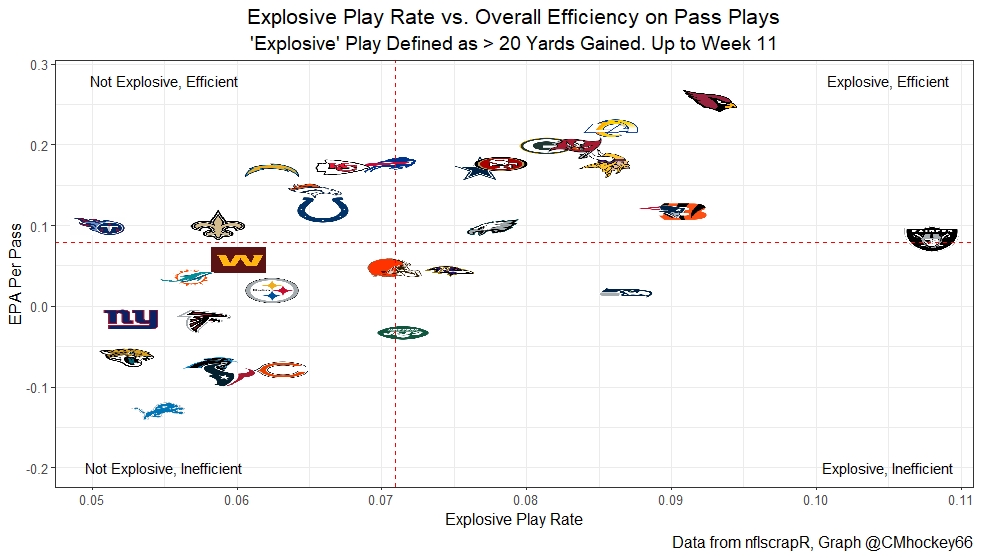
Alternatively, you can look at the expected points added (EPA) on that play. This time we can say that passes generating more than 2.0 expected points are "explosive."
Binning these continuous variables into "explosive" and not creates a problem. We have to draw a line between explosives and not somewhere. But, where we draw that line can have huge effects on our analysis.
For example, say we consider a play explosive when it adds more than 2.0 expected points on that play.
Note that about 10% of passing plays generate more than 2.0 expected points.
Using that cutoff, the Patriots have one of the most explosive offenses in the NFL.
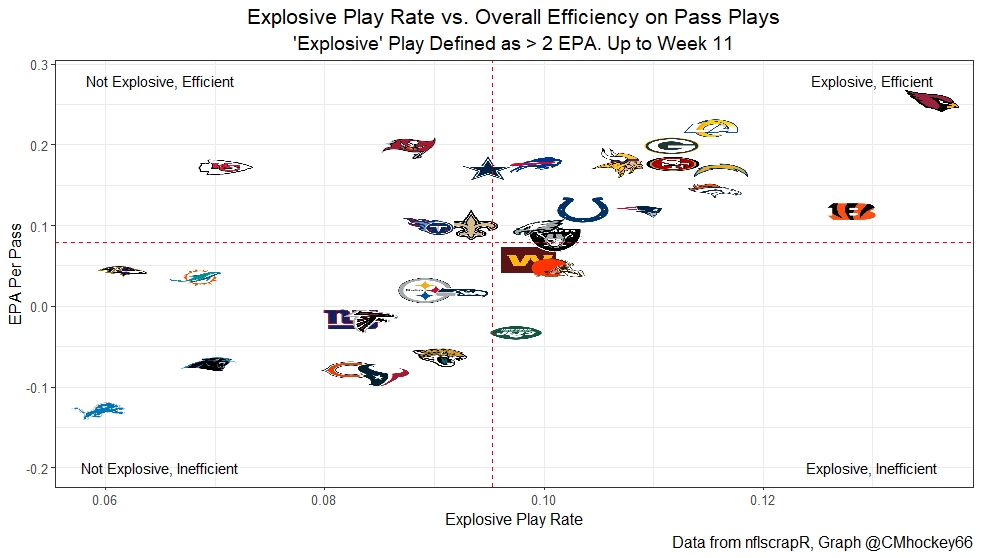
Who wouldn't love to show their favorite team's biggest perceived weakness is actually a strength?
But, when we change the threshold of explosive, we can dramatically change our conclusion.
Say we call a pass explosive when it adds 2.5 expected points. Note this represents the top 5% or so of passing plays.
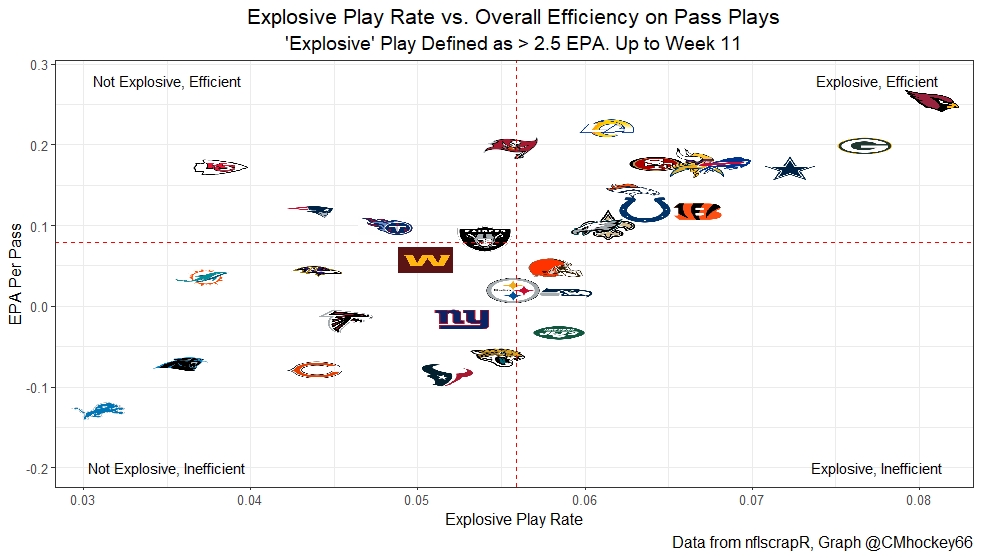
Suddenly the Patriots sink to one of the least explosive offenses in the NFL. So anytime an analysis bins a variable into two categories with an arbitrary cutoff point, be aware of where they draw that line. It can matter a lot.
For the sake of this article, explosive has to be something. So, I will run the analysis using both the 2 and 2.5 EPA cutoffs, and 20 yards gained cutoffs. The smaller the cutoff the more likely it is to be meaningful because it will have the largest sample size, but I want to cover my tracks.
Does Explosive Play Rate Matter?
Now that we have quantified an explosive play, on to the fun stuff. To know if an NFL offense's explosive play rate matters, we will run a reasonably simple analysis.
We will try to predict future expected points added, aka passing efficiency. If an offense's low explosive play rate actually matters going forward, it will help us predict future efficiency, independent of past efficiency.
What data will we use for our predictions? Well, I have two separate groups of samples set up.
First, we will look at half-season splits over the last six NFL seasons. We will split up the regular season into two groups, up to Week 9, and Week 9 and beyond. Now we can look at the simple correlation between explosive play rate and future offensive efficiency.
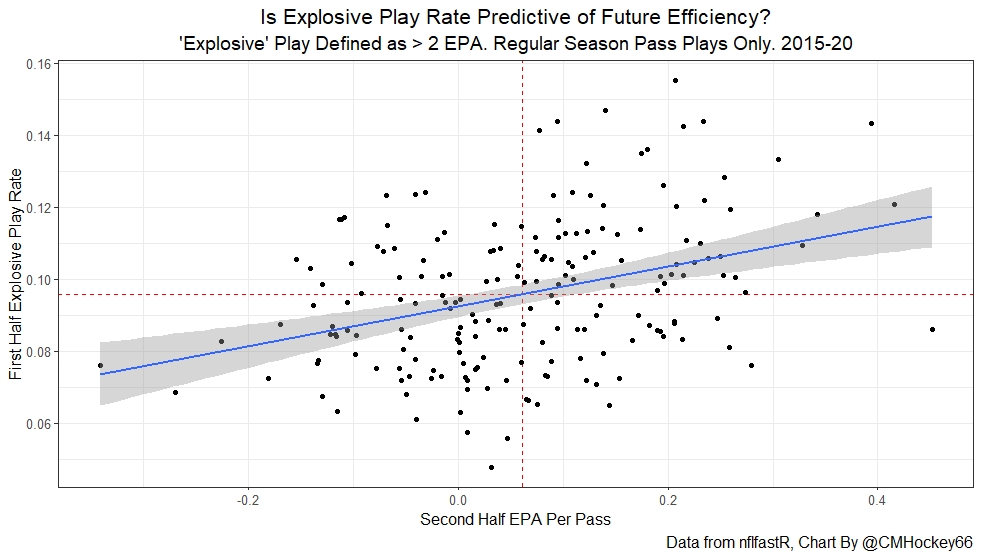
We can see as a team's offense was more explosive in the first half, they have been more efficient in the second. This would seem to suggest that explosive play rate matters and is predictive of future efficiency.
In other words, we should expect offenses that struggle to generate chunk plays to be less efficient in the future.
This isn't actually true because explosive plays are part of overall efficiency (EPA Per Play). To account for this we will need to run a regression model trying to predict future EPA, and look at explosive play rates correlation with future EPA holding past EPA constant.
If we still get a significant correlation on explosive play rates, we will know that fans should be concerned about an offense that can't generate huge plays, even if it has been efficient in the past.
So, let's run the regression to find out. Note I will run the regression three times. Because we know from above that what we use to define an "explosive" play matters so much, each of the three regressions will use different definitions of explosive plays.
- The first explosive play will be a pass generating more than 2 expected points.
- The second regression will use passes generating more than 2.5 expected points as explosive.
- The third model will use passes gaining more than 20 yards as explosives.
Now, let's look at the results:



Confused? Here's what this says:
Explosive play rates are not even close to a significant predictor of future passing success.
We can see with the P-values associated with the explosive play rate variables. The smaller the P-value, (on a scale of 0-1) the more likely that variable is to contain important information about the variable of interest. Generally, you want them to be below 0.01 to contain a strong relationship with your variable of interest.
In this case, we can see that no matter how we define explosive plays, they are not likely to help us predict future efficiency independent of past efficiency.
I can already imagine one piece of pushback. When people think of Super Bowl contenders, they are generally going to be focused on the playoffs.
So I have included the same regression framework again, this time using regular-season efficiency and explosive play rates to predict playoff passing efficiency. The results were the exact same.



Since we observe the same thing across three different definitions of "explosive plays," in both the regular season and playoffs, we can safely say if explosive play rate does not matter. All of the important information about explosive plays is already contained in per-play efficiency (EPA).
Bill Connelly did a big-play analysis in college football several years ago and arrived at a similar conclusion — "The key to explosiveness is efficiency. The key to making big plays is being able to stay on the field long enough to make one."
This should be especially comforting to Kansas City Chiefs fans who have watched their team's ability to generate chunk plays evaporate this season. Or to Patriots fans who are likely to hear that you can't win with a quarterback like Mac Jones because he doesn't make enough big plays.
This analysis contains an important bit of intuition about football, and life in general. If an offense has been good in the past in spite of not generating many huge, flashy plays, we should still expect it to be good in the future.
If an offense has been inefficient on a per-play basis but has been capable of wowing you with huge chunk plays, we should actually expect the offense to struggle in the future, despite those big plays.
The reason why is a basic fact about life. Absolutely nothing can make up for a lack of good data. In football, we are already working with a relatively small number of plays.
So, when you try to knock an offense by saying that they have been good but they don't take the top off the defense as often as they should, you're taking an already small number of available plays, and filtering out around 90% of them!
So sure, "explosive" plays feel like the most meaningful ever when watching the games, and they make for greater TV.
But, if you focus too much on that small subsection of plays you will miss the forest for the trees and make your analysis much worse.
Good predictive analysis here must use every single play, not just the most exciting ones.


